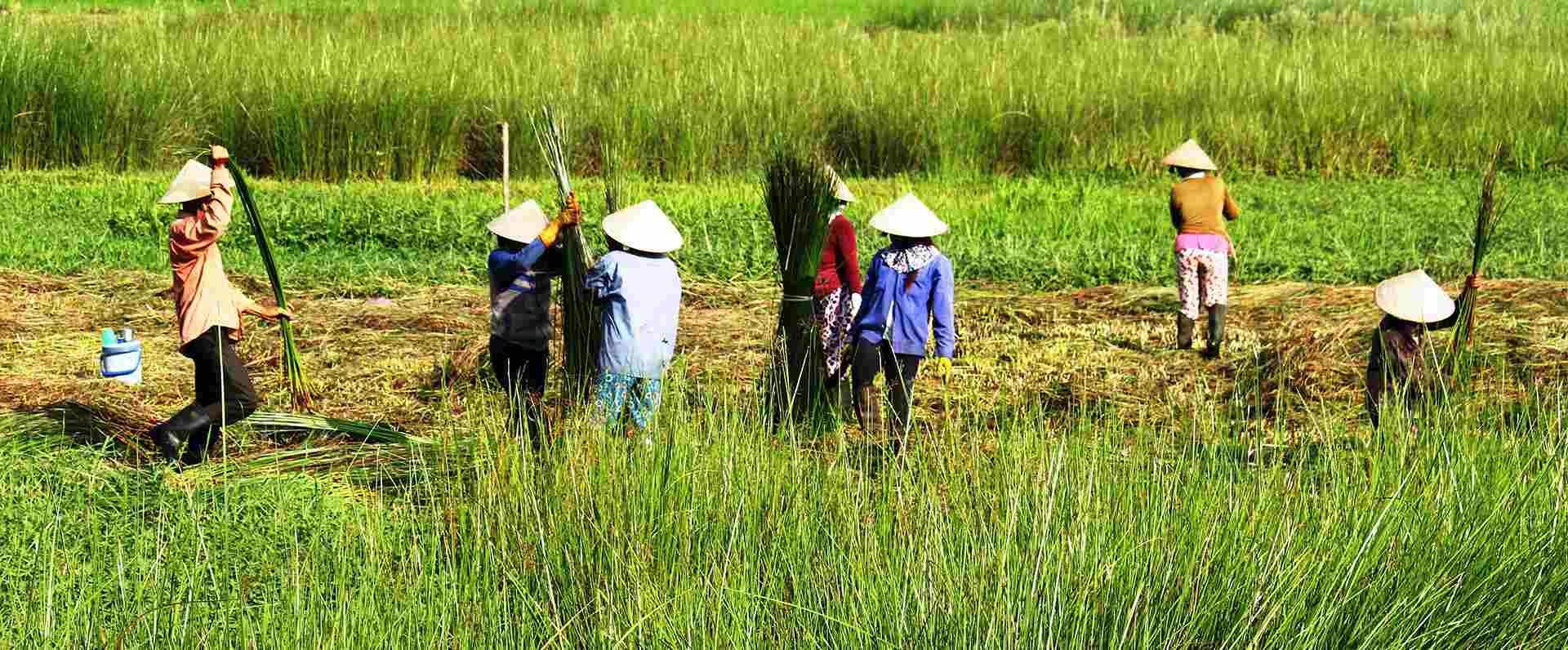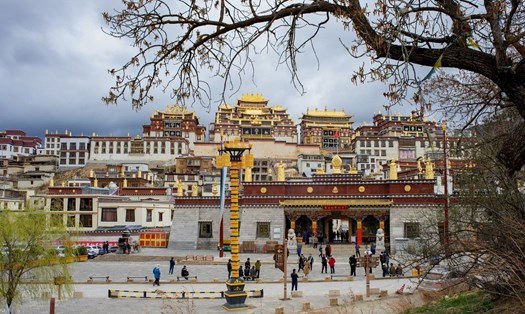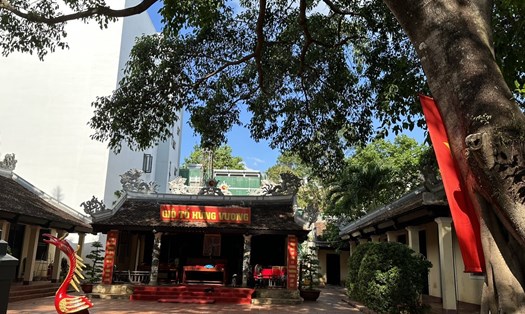Strange story in the land
In the morning, wandering around the Sa Huynh fishing port, I heard the familiar sounds of greetings from the women selling seafood. It was difficult to distinguish which voice was Tam Quan's and which was Sa Huynh's. It seemed like there was some ancient connection that connected the two lands together even though they were not from the same province. How strange!
It is said to be “strange” because, usually when dividing administrative boundaries between provinces, people always rely on the pronunciation of the residents in the area along with the characteristics of the terrain and geography. For example, if you go past Doc Soi in Quang Nam, you will no longer hear “chu, mo, rang, rua, te”. But that is not the case with Sa Huynh and Tam Quan.
Sa Huynh is perhaps a rare place name in the Central region whose name does not refer to any administrative unit. It is not the name of a village or commune. But everyone knows Sa Huynh. This land is the only place in Quang Ngai where the people’s accent is different from the rest of the province. For example, the Sa Huynh people pronounce the sound “ai” correctly, not “ua”. “Lo tai” not “lo tua”; “xe dap” not “xe dop”… That is, the Sa Huynh people speak exactly like the Tam Quan people! Is there any blood relation from prehistoric times? Let’s try to find the similarities between the two lands.
From thousands of years ago
In 1909, French archaeologist M.Vinet accidentally discovered a jar burial area with about 200 jars on a sand hill called Ma Vuong located east of An Khe lagoon today. Archaeologists believe that this cemetery could be the burial place of the dead of a tribe that often drifted at sea, and when someone died, they brought them there for burial. It was not until 35 years later, in 1934, that another French archaeologist, Ms. Madeleine Colani, was sent by the Far Eastern Institute to Sa Huynh to continue searching for traces of prehistoric people in this area. During that archaeological expedition, Ms. M.Colani discovered in Cuom Cave - a sand hill located east of Tam Quan, a jar burial area, similar to the jar burial area at Ma Vuong Hill that M.Vinet had discovered before. In 2002, Vietnamese archaeologists continued to excavate this archaeological site and discovered dozens of jar burials of various sizes. Combining the characteristics of the jar burials and the artifacts collected from the excavation, the archaeologists concluded: The jar burials in Ma Vuong (Sa Huynh) and Cuom Cave (Tam Quan) belonged to indigenous people, not from other places as previously speculated. They were the owners of a civilization 2,500 - 3,000 years ago. The beads of ancient people scattered in this sand dune, over 2,500 years old, have identified an archaeological site: Cuom Cave.
Thousands of years ago, people in this Sa Huynh-Tam Quan land knew how to make jewelry skillfully and sophisticatedly. The residents here had reached a high level of ceramic crafting techniques, had the skills to weave fabrics, make glassware and even forge iron. Knowing how to fish at sea and trade between regions through natural seaports were activities that had taken place thousands of years ago by the residents of this land.

Until today
No one knows since when, but every year on the third day of the Lunar New Year, a festival takes place at Sa Huynh estuary, which the locals call “the net dipping festival”. Hundreds of fishing boats take turns leaving Sa Huynh estuary amid the sound of firecrackers exploding (before the ban on firecrackers) and the earth-shaking cheers of thousands of people standing on both banks. Although the festival is said to take place in Quang Ngai, most of the people who come to watch are from Tam Quan!
I have attended this festival many times and also wondered why it was not people from Duc Pho town who came to see it but people from Tam Quan who came to see it even though they had to go through a pass called Binh De? Dr. Doan Ngoc Khoi, who has been working with Sa Huynh archaeological sites for more than 30 years, said that there is a subconscious connection between the two lands of Sa Huynh and Tam Quan that cannot be explained simply. They went to see the "net water dipping" ceremony, and also participated in singing and dancing games such as singing "ba trao" and "sac bua" right on the beach. These are art forms that Hoai Nhon and Tam Quan people are very "addicted" to. In Hoai Nhon, there are currently 10 "ba trao" rowing teams, most of whom are residents of the Tam Quan coastal area. "ba trao" rowing is one of the folk art forms that Hoai Nhon town is planning to preserve and promote.
The story of singing "sac bua" and singing "ba trao" is not only present in the village communal house yards during the spring festival or holidays, only performed for "internal" audiences, but now, the people of this area know how to sing and dance for Western visitors as well. The Go Co Village tourist area, located next to the Ma Vuong Go archaeological site, has been bustling on the internet for several years now, also "rising" from its own cultural assets, now upgrading to "integrate" with the world! The artisans of the village have now become professional actors, often performing for visitors from all over the world whenever they have the opportunity to visit this ancient village. Perhaps, the connection between the two lands of Sa Huynh - Tam Quan since ancient times will "give advice" to the coconut brothers to come up with a similar model to have friends and partners to do tourism together.
Hearing about the existence of an invisible thread connecting the two lands of Sa Huynh and Hoai Nhon, poet Tran Cao Duyen, a person born and raised in Sa Huynh, who often "boasts" that he only eats Hoai Huong fish sauce, contributed: "Not only do we buy fish sauce and vegetables in Tam Quan, we also buy flowers there, and we also buy sedge mats for our children's weddings in Tam Quan! Not only that, if Sa Huynh people are seriously ill, they will also rush across Binh De to Hoai Nhon Hospital instead of running to Quang Ngai!"
No wonder, both Hoai Nhon and Duc Pho held hands to become towns, right in 2020!
(Article from the Central Highlands - Central Spring Labor publication 2025)




